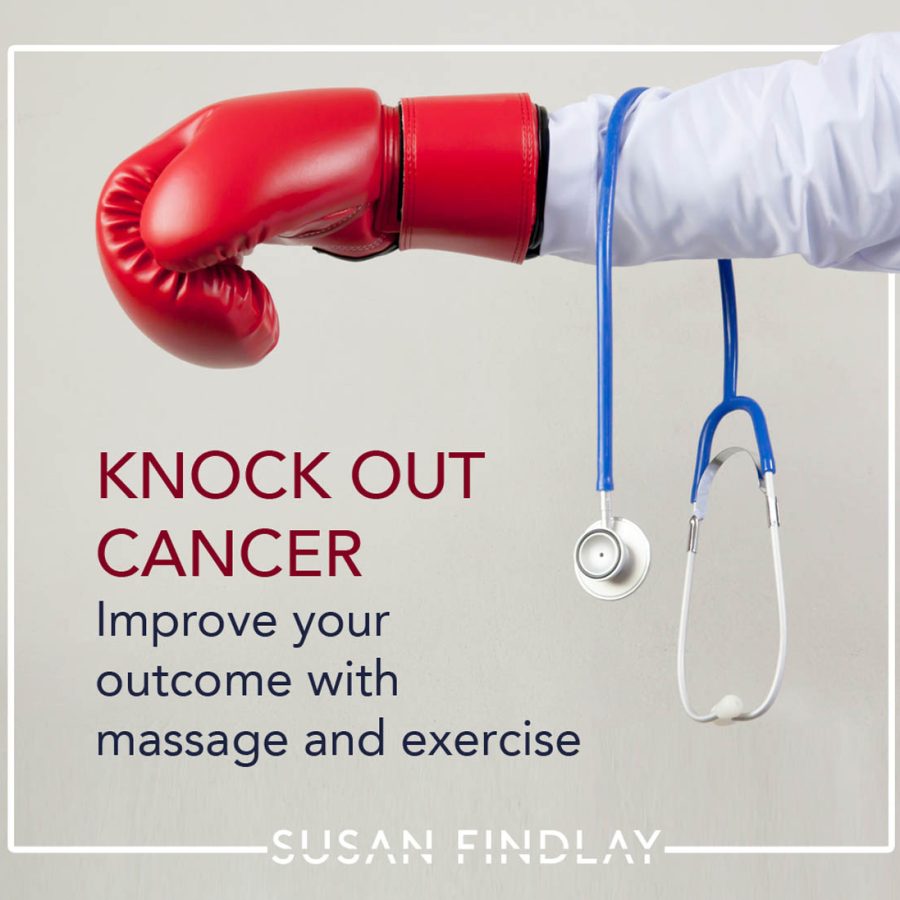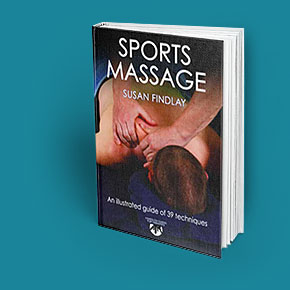Historically, massage has mistakenly been viewed as a contradiction for clients who are currently undergoing treatment for, or who have a history of cancer. Traditionally, it was believed that massage could exacerbate the problem by spreading the illness throughout the body, or even be passed on to the masseuse. With advancements in science and a more comprehensive understanding of how the body works, we now know these myths to be false.
However, with some of these misconceptions so ingrained within our society due to years of misrepresentation of the facts, it will take both patience on our part and unequivocal proof in order to dispel these falsehoods. The purpose of this article is to demonstrate that both exercise and soft tissue therapy have been scientifically proven to not only help people cope with the ailments that come from a battle with cancer, but in some cases, even been found to have helped in the prevention of the disease.
Cancer is not a new disease; archaeological studies have even found it prevalent in the autopsies of dinosaurs. However, it has become so pervasive in our society today that the statistics say 1 in 2 people will develop cancer at some point in their lives; some preventable through healthy living, others not. The survival rate is highly variable depending on the type of cancer, for instance lung cancer has below a 5% survival rate but 89% of those cases could have been prevented with improved lifestyle choices, whereas breast cancer has a 78% survival rate with 27% of preventable cases.[1]
It may come as no surprise, and there is also evidence based research to show that if you lead a healthier lifestyle, are careful with what you eat, maintain a healthy weight, are relatively active, do not smoke, manage your stress levels and avoid toxic environments, you have given yourself the best chance to sidestep cancer. However, although making these changes to your lifestyle enormously enhances your chances of staying cancer free, cancer can unfortunately still find a way to infiltrate your life.

Exercise and Cancer
The word athlete and cancer feels like an oxymoron. What we see when we look at a strong, fit athlete would be the general interpretation of health. But, unfortunately, being fit is not the same as being healthy. Most people can immediately think of some famous athletes like Lance Armstrong (cyclist – testicular cancer), Stan Musial (baseball player – prostate cancer), Martina Navratilova (tennis – breast cancer) who all contracted the disease during their careers. There are a number of plausible theories about why they developed cancer, including the demands put on them through incredibly intense and strenuous training regimes. In order for any professional athlete to compete to the best of their ability against other athletes, they must constantly push their bodies to the max. Both in training and when competing. This, in turn produces an inflammatory state within the connective tissue. Our connective tissue is considered to be the home of the immune system and long-term inflammation has been linked to cancer, providing conditions which allow the disease to thrive. It is important to note that inflammation is not exclusive to athletes, it can also be found in common conditions such as type II Diabetes.
In the case of Lance Armstrong, he is known for being a 7 time Tour de France champion. The Tour de France is a 3 week race that covers about 2,200 miles under gruelling conditions, pushing the body to its limits of endurance. Armstrong was diagnosed with stage 3 testicular cancer and had symptoms that included coughing up blood and a swollen testicle. The cancer spread to his brain, lungs and abdomen. His oncologist gave his survival rate as ‘almost none’. Often when people hear the big ‘C’ word, they immediately panic and believe that death is inevitable. However, there are so many variables with each cancer case that nothing is ever inevitable. Athletes are often equipped with the qualities and mental strength that will see them through to recovery. This is true in the case of Lance. His strong mental character was one of the factors that saw him completely recover, even going on to win the Tour de France again.

In relation to the impact of inflammation on the body, Helene Langevin, a prominent researcher in the use of complementary medicine, completed a study with her colleagues, looking the effects of how ‘Stretching Impacts Inflammation Resolution in Connective Tissue’[3]. In her work she explains that cancer is not just a collection of tumour cells growing out of control; rather that primarily these cells need a base in which the cancer can spread. She describes the base like railway tracks of dense connective tissue that allows the cancer to grow undisturbed and then use these tissue tracks to travel along. Therapists often refer to these areas as ‘tension’ or ‘adhesions’, but in reality they are areas where there is poor movement and persistent inflammation.
Langevin also discusses the enthusiasm of therapists to make a change in the ‘length’ of the tissue, in order to make it more pliable, flexible and attempt to return it to a more normal length. A common consequence of this approach however, is that the treatment used is often administered with too much aggression – resulting in the fibroblasts reacting in such a way that more inflammation is actually caused, rather than moving the tissue into a state of healing.
This is especially relevant when we apply manual techniques to therapy: less is often more. Implementing a softer touch, melting into the tissue, keeping within a range of comfortable mobility is actually more beneficial than deep, stripping types of strokes. Helene’s research focused on the importance of controlling the inflammatory responses during the healing process, demonstrating that if we are continually challenging tissue repair with excessive hands on work, it will have the opposite of the desired affect and subsequently lead to increased tissue fibrosis[4]. It is important to be kind with your hands, consider your depth and speed. The idea that you should melt and ease into your touch is becoming a popular and much more effective approach.
Stretching and Recovery from Cancer
My home care, whilst client specific, often includes stretching, but through effective communication and understanding their limitations, I am conscious not to take them to their end range. Instead of calling it “stretching”, it would be more accurately classified as ‘mobility work’. When prescribing a stretch, forcing someone to achieve full range of movement soon after a surgical procedure is counterproductive; it induces inflammation and has a negative effect on the recovery of the connective tissue. For example: be aware when prescribing a chest opening stretch for someone who has had a mastectomy, only instruct them to move to a position that does not induce discomfort but remains within a pleasant range of movement.[5]
So, where does that leave us as soft tissue therapists?
Whether you are qualified as a sports massage, holistic or Swedish therapist the modifications when treating someone with cancer are the same, as are the benefits. Clients who are undergoing treatment for cancer can struggle to sleep and are often in a lot of pain. Massage can help with pain management as well as inducing a better night’s sleep. Massage also helps with the anxiety many cancer patients may feel, as well as improving movement which in turn can inspire hope and give the client a more positive outlook. Mental state, as mentioned in reference to Lance Armstrong, can have untold benefit on a patient’s recovery.
Light, relaxing massage can safely be given to people at all stages of cancer. Tumour or treatment sites should not be massaged to avoid discomfort or pressure on the affected area and underlying organs[6]. Cancer is no longer viewed by any medical professionals as a ‘hands off’ condition and, with the proper application, there are many benefits to be gained. It’s imperative to remember that knowledge is key, understanding the intrinsic and extrinsic factors surrounding the diagnosis is vital. Understanding what your client is dealing with will determine what you can offer, direct your choice of techniques and allow you to build a program suited to their specific rehabilitation or treatment.
As a soft tissue therapist working with a cancer patient, your goals will necessarily shift. The needs are different and you shouldn’t expect the same outcomes. However, the role you play is extremely beneficial and consequently exceptionally rewarding.
For further study around fascia, cancer and chronic pain, I suggest listening to this great podcast with Helene Langevin: https://www.liberatedbody.com/podcast/helene-langevin-lbp-049
If you would like to further specialise and become an accredited Oncology Massage therapist, you can join me for a 3-day practical course which will enable you to meet the needs of your client at any stage of health; increase & develop your hands on skills; deliver a practical treatment within an oncology clinical setting; offer suitable home care suggestions; give you free registration on the website ‘find a therapist’, whilst also providing you with any ongoing support you may need. Included is a comprehensive online portion of the course, more info and booking: https://www.susanfindlay.co.uk/Oncology
- http://www.cancerresearchuk.org/health-professional/data-and-statistics accessed 27/10/2019 ↑
- Thomas RJ, Kenfield SA, Jimenez AExercise-induced biochemical changes and their potential influence on cancer: a scientific reviewBritish Journal of Sports Medicine 2017;51:640-644. ↑
- Berrueta, Lisbeth et al. “Stretching Impacts Inflammation Resolution in Connective Tissue.” Journal of cellular physiology vol. 231,7 (2016): 1621-7. doi:10.1002/jcp.25263 ↑
- Henry, Ginard et al. Inflammatory mediators in wound healing. Surgical Clinics, Volume 83, Issue 3, 483 – 507 ↑
- Bouffard NA, et.al., 2008. Tissue stretch decreases soluble TGF-B and type-1 procollagen in mouse subcutaneious connective tissue: Evidence from ex vivo and in vivo models. J cell Physiol. 214: 389-395 ↑
- https://www.cancercouncil.com.au/17958/b1000/massage-and-cancer-42/massage-and-cancer-benefits-of-touch/ accessed 27/10/2019 ↑

